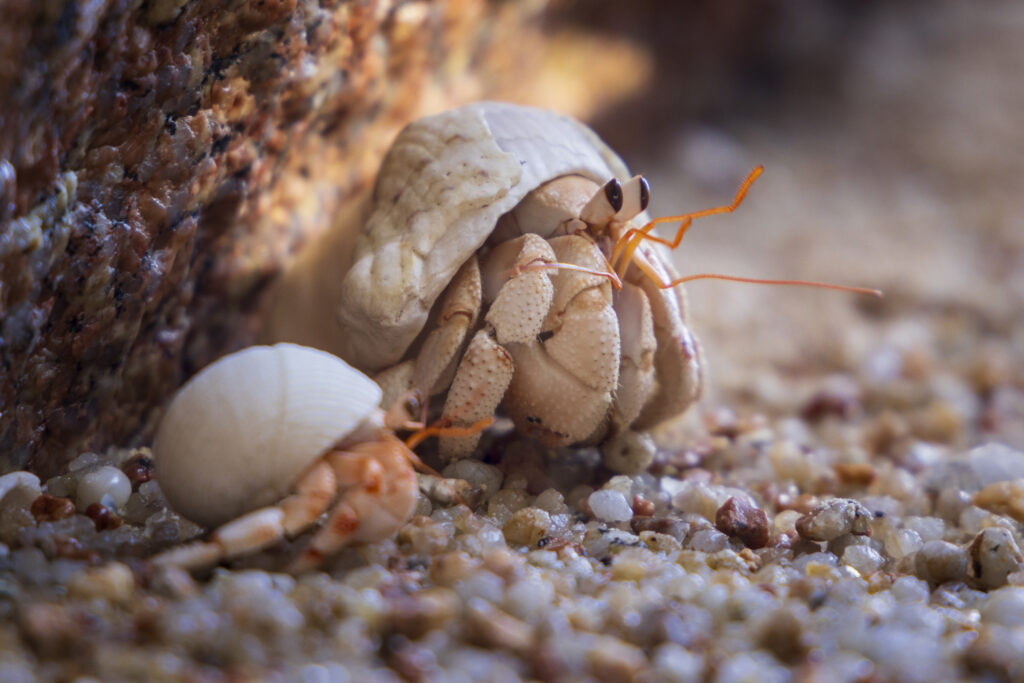Seashells have fascinated beach-goers, scientists, and collectors for centuries. Their unique appearance and intricate designs often reveal a wealth of secrets about the world below the waves. In this guide, we’ll explore the world of seashells, diving into their origins, the creatures that call them home, and the intriguing facts that make them so wonderful.
What are seashells?
Seashells, simply put, are the outer protective coverings of marine creatures, primarily molluscs. These creatures craft their shells using calcium carbonate extracted from their surroundings, resulting in a diverse array of shapes, sizes, and colours. Found strewn across beaches worldwide, seashells are not only beautiful to look at but also serve as tangible objects that show the ocean’s vast biodiversity.
What are molluscs?
Molluscs are a diverse group of invertebrates (Mollusca) including creatures like snails, clams, and octopuses. Molluscs will craft just one shell through their lifetime, utilising proteins and calcium carbonate to fashion their protective exoskeleton.
Types of seashells
Seashells come in a great variety, each with its unique characteristics and origins. Among the most common types are flat shells and cone-shaped shells. Flat shells are often found in sandy coastal regions, while cone shells inhabit tropical reefs and sandy bottoms. These variations in habitat contribute to the diversity of seashell types found across different beaches worldwide.

What do seashells look like?
Seashells exhibit an endless array of shapes, sizes, and colours, each adapted to suit its inhabitant’s needs. Scientists believe that these patterns and colours serve as engineering blueprints for molluscs, guiding the growth of their shells. Whether spiral, conical, or flat, seashells boast intricate designs that reflect the wonders of marine life.
Do animals live in seashells?
Many marine creatures call seashells home, utilising them as protective shelters against predators and harsh environmental conditions. Among the most popular inhabitants are hermit crabs, which adopt discarded shells as they outgrow their own. Other creatures, like certain species of snails and molluscs, also seek refuge within seashells, forming intricate relationships with their protective casings.
Cone snails, that live in conical shaped shells, are very venomous and capable of stinging. They may excrete deadly fluid, which could be dangerous if you’ve got those shells in your pocket. This is why it’s really important not to take shells from the beach. There are around 500 species of cone snail, and all of them are venomous.

Is it legal to take seashells from beaches?
In many parts of the world, including the UK, removing seashells from beaches is illegal due to their ecological significance. Seashells provide essential habitats for various marine organisms and play a crucial role in coastal ecosystems. Their removal can disrupt fragile ecosystems and threaten biodiversity, making it imperative to leave them undisturbed in their natural environment. If you’d like to find out more about conversation, check out our dedicated page as well as our blog on the do’s and don’ts in order to have an ecofriendly holiday.
Fun facts about seashells
1. Seashells were used in countries such as China and India as currency. This started thousands of years ago, where cowry shells or copies of the shells were used. Cowries were used in India as currency up until around the 1830s. In Papua New Guinea, you can still use cowry shells as money!
2. Most seashells open to the right, which means they are dextral, and only some are left-handed, which means they are sinistral.
3. Putting a seashell to your ear might sound like you can hear the ocean, but it’s actually just the ambient noise around you turned up a notch. It’s amplified by the shell!
4. Argonauts are the only known octopus that have a shell, and it’s only the females that create their shell. They use their arms to build and repair the shell, instead of secreting the chemicals like other molluscs.
5. Shells have often been used in the production of toothpaste because of the calcium carbonate in them! In the 19th century, seashells would be dissolved in vinegar and used in powders used to treat things like heartburn too.
From their formation by molluscs to their role as habitats for marine creatures, seashells embody the rich biodiversity and ecological significance of our oceans. So next time you stroll along the shore, take a moment to marvel at the seashells beneath your feet—they are more than meets the eye. To learn more about our world’s marine wildlife, book your tickets to Deep Sea World today!
